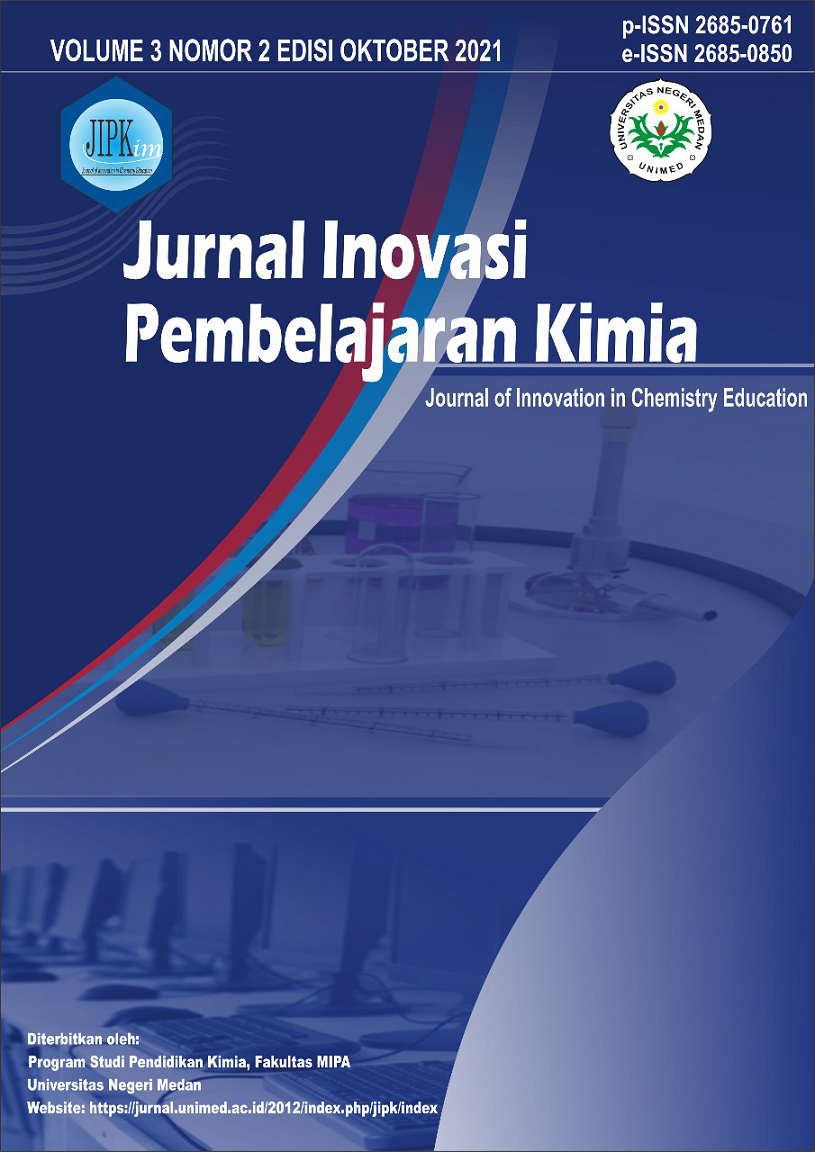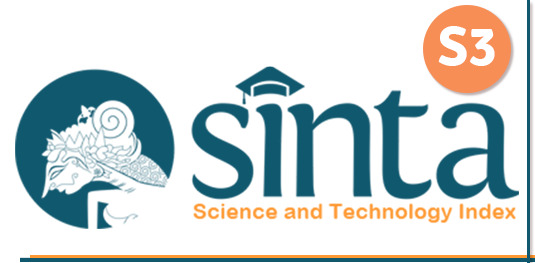Pengaruh Penggunaan Media Webblog Berbasis HOTS Terhadap Motivasi dan Hasil Belajar Pada Materi Laju Reaksi
DOI:
https://doi.org/10.24114/jipk.v3i2.22810Keywords:
Media Weblog, Problem Based Learning, Soal HOTS, Motivasi dan Hasil Belajar, Laju ReaksiAbstract
This reseach goals to determine how the effect of knowing the effect of using Webblog media on the HOTS Evaluation Based Problem Based Learning Model on Motivation and Student Learning Outcomes in the Material of Reaction Rate. The research method used was an experiment that was modified as needed. The sampling technique used is by using a purposive technique where class XI IPA 4 as an experimental class is taught using Webblog Media in the Problem Based Learning model using and XI IPA 5 as a control class that is taught using Power Point Media in the Problem Based Learning learning model based on HOTS evaluation . The analysis technique used is the mean difference test, the percent increase in learning outcomes, normality test, homogeneity test and hypothesis testing. The results obtained by the average value of the experimental and control classes in the pretest data were 36.25 and 27.25. The post-test scores for the experimental and control classes were 79 and 65.5. Data on the normality and homogeneity test obtained data were normally distributed and the data were homogeneous. The correlation test for the effect of using Webblog media in the Problem Based Learning model on student motivation and learning outcomes is the value of rxy = 0.754 which means there is a positive correlation between motivation and student learning outcomes.References
June, S., Yaacob, A., dan Kheng, Y.K., (2014), Assesing the Use of Youtube Videos and Interactive Activities as a Critical Thinking Stimulator for Tertiary Students : An Action Researchg, International Education Studes, 7(8) : 56 “ 57
Keengwe, J., Onchwari, G., dan Onchwari, J., (2009). Technology and Student Learning : Toward a Learner “ Centered Teaching Model, AACE Journal, 17 (1), 11 “ 22
Kemendikbud., (2018), Buku Penilaian Berorientasi Higher Order Thinking Skilss Program Peningkatan Kompetensi Pembelajaran Berbasis Zonasi, Kemendikbud, Jakarta
Kristiantari, R. (2014). Analisis Kesiapan Guru Sekolah Dasar dalam Mengimplementasikan Pembelajaran Tematik Integratif Menyongsong Kurikulum.Jurnal Pendidikan Indonesia, 3(2), 460 “470
Lewis, A., Smith, D., (1993), Defining Higher Order Thinking, Theory Into Practice, (3):131- 137
Nur, H.F., Redjeki, T., dan Dwi, N.N., (2013), Studi Komparasi Pengunaan Metode PBL (Problem Based Learning) Dilengkapi Dengan Macromedia Flash dan LKS (Lembar Kerja Siswa) Terhadap Prestasi Belajar Ditinjau dari Motivasi Belajar Siswa Materi Asam, Basa dan Garam Kelas VII SMP Negeri 1 Jaten Karanganyar Tahun Pelajaran 2012/2013, Jurnal Pendidikan Kimia , 2 : 18 “ 165
Slameto., (2010), Belajar Faktor-faktor yang Mempengaruhinya, Rineka Cipta, Jakarta.
Sutirman, (2013), Media Dan Model “ Model Pembelajaran Inovatif, PT. Graha Ilmu, Yogyakarta
Underbakke,M., Borg,J.M., Peterson, D., (1993), Researching and Developing The Knowlegde Base for Teaching Higher Order Thinking, Theory Into Practice, (3):138-146













